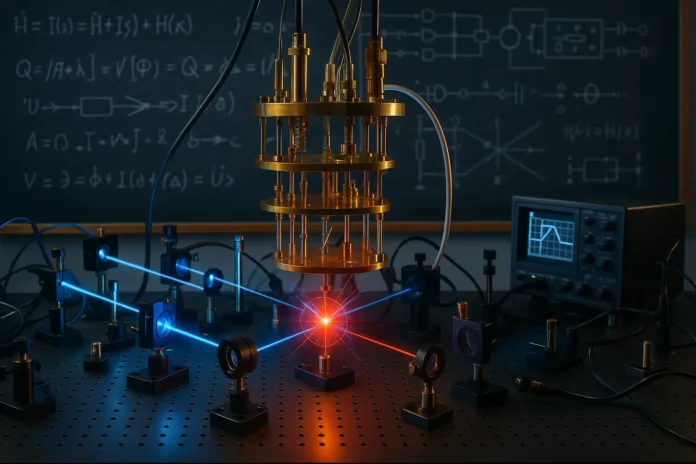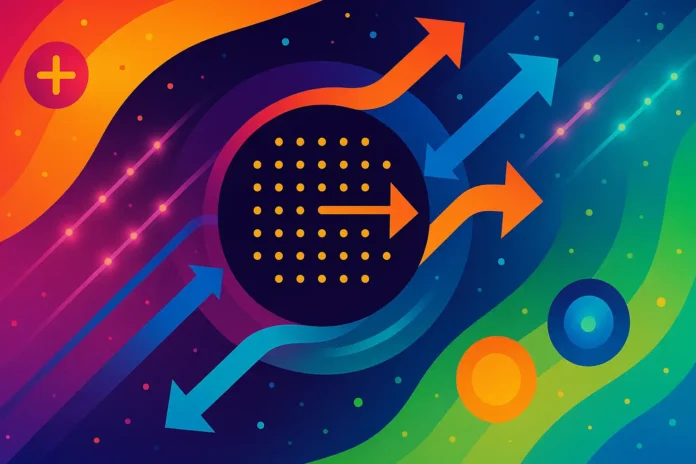Table of Contents
- Introduction
- What Are 2D Quantum Materials?
- Motivation for 2D Quantum Materials
- Overview of Fabrication Approaches
- Mechanical Exfoliation
- Chemical Vapor Deposition (CVD)
- Molecular Beam Epitaxy (MBE)
- Liquid Phase Exfoliation and Chemical Methods
- Van der Waals Heterostructures
- Deterministic Stacking and Transfer Techniques
- Encapsulation and Substrate Engineering
- Twistronics and Moiré Engineering
- Patterning and Lithography for Device Fabrication
- Challenges in Material Quality and Scalability
- Interface and Contact Engineering
- Characterization Techniques
- Quantum Phenomena in 2D Systems
- Emerging 2D Quantum Materials
- Applications in Quantum Technology
- Conclusion
1. Introduction
Two-dimensional (2D) quantum materials—crystalline layers only a few atoms thick—exhibit exotic electronic, magnetic, and topological phenomena. Their fabrication enables exploration of new quantum states and scalable device platforms.
2. What Are 2D Quantum Materials?
These include materials like graphene, transition metal dichalcogenides (TMDs), hexagonal boron nitride (hBN), and novel compounds that host superconductivity, magnetism, or topological states in atomically thin layers.
3. Motivation for 2D Quantum Materials
- Reduced dimensionality enhances electron correlations
- Emergent quantum phases (e.g., quantum spin liquids, QHE)
- Flexible integration into heterostructures
- Compatibility with CMOS for quantum devices
4. Overview of Fabrication Approaches
Key fabrication routes include:
- Mechanical exfoliation from bulk crystals
- Chemical vapor deposition for large-scale synthesis
- Molecular beam epitaxy for atomic precision
- Wet chemical methods for dispersions and films
5. Mechanical Exfoliation
The “Scotch tape” method enables high-quality monolayers by peeling layers from bulk crystals. Despite low yield, it provides pristine samples for fundamental research.
6. Chemical Vapor Deposition (CVD)
CVD grows 2D materials on metal or dielectric substrates using precursor gases. It enables:
- Wafer-scale uniform films
- Controlled layer number and morphology
- Growth of graphene, MoS₂, WSe₂, and hBN
7. Molecular Beam Epitaxy (MBE)
MBE provides atomic-layer precision under ultra-high vacuum. It allows:
- Tailored doping profiles
- Growth of topological insulators, superconductors
- High-purity van der Waals layers
8. Liquid Phase Exfoliation and Chemical Methods
Bulk materials are sonicated in solvents to isolate 2D sheets. These dispersions are used in:
- Thin film coatings
- Printable electronics
- Flexible devices
9. Van der Waals Heterostructures
2D materials can be stacked without lattice matching, forming artificial heterostructures via van der Waals forces. This enables novel interface physics and quantum coherence.
10. Deterministic Stacking and Transfer Techniques
Techniques like dry-transfer and viscoelastic stamping align layers with controlled orientation. Atomically clean interfaces are vital for tunneling, proximity effects, and twistronics.
11. Encapsulation and Substrate Engineering
Encapsulating 2D materials in hBN reduces disorder, suppresses charge traps, and improves mobility. Substrates (e.g., SiO₂, sapphire) affect strain, doping, and device performance.
12. Twistronics and Moiré Engineering
By twisting layers at small angles, moiré superlattices form, leading to flat bands and correlated phases such as:
- Superconductivity in twisted bilayer graphene
- Moiré excitons and ferroelectricity
13. Patterning and Lithography for Device Fabrication
Electron-beam and photolithography define contacts and gates. Etching, ion milling, and shadow masking are used for channel isolation and quantum dot creation.
14. Challenges in Material Quality and Scalability
- Grain boundaries and dislocations in CVD films
- Strain-induced inhomogeneities
- Contamination during transfer
- Limited uniformity in large-area growth
15. Interface and Contact Engineering
Ohmic and tunneling contacts are tailored via:
- Edge contacts for graphene
- Work function alignment for TMDs
- Contact doping and annealing
16. Characterization Techniques
Essential tools include:
- Atomic force microscopy (AFM)
- Raman spectroscopy
- Scanning tunneling microscopy (STM)
- Angle-resolved photoemission spectroscopy (ARPES)
17. Quantum Phenomena in 2D Systems
2D materials host phenomena such as:
- Quantum Hall and fractional QHE
- Berry curvature and valley Hall effects
- Topological edge modes
- Spin-orbit coupling and spin textures
18. Emerging 2D Quantum Materials
New materials under exploration:
- Magnetic monolayers (CrI₃, Fe₃GeTe₂)
- 2D superconductors (NbSe₂, TaS₂)
- Quantum spin liquids (α-RuCl₃)
- Topological semimetals and insulators
19. Applications in Quantum Technology
- Single-photon emitters in WSe₂
- 2D Josephson junctions and SQUIDs
- Spin-valley qubits
- Quantum transducers and sensors
20. Conclusion
Fabricating 2D quantum materials combines precise engineering and quantum design. These atomically thin systems unlock new physics and device architectures, shaping the future of scalable quantum technologies.






